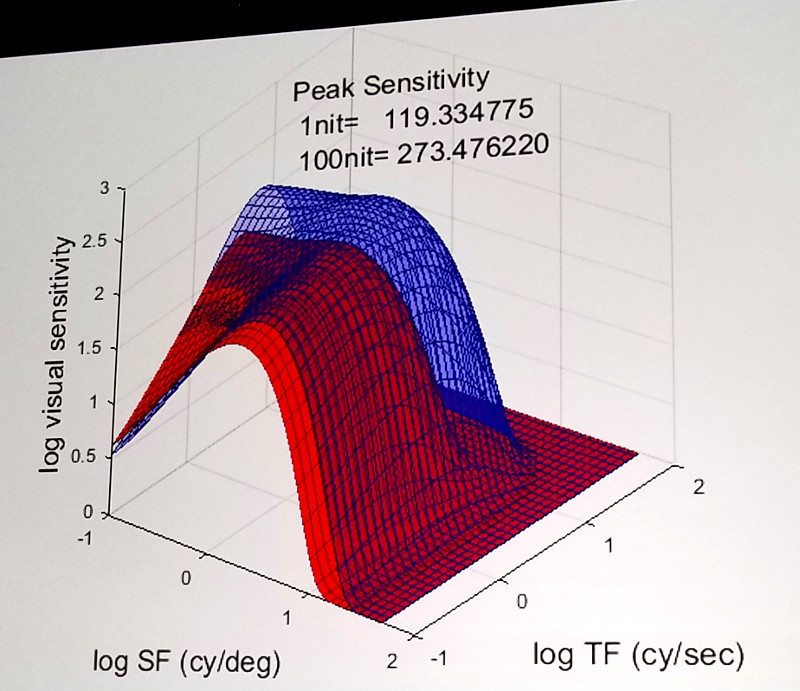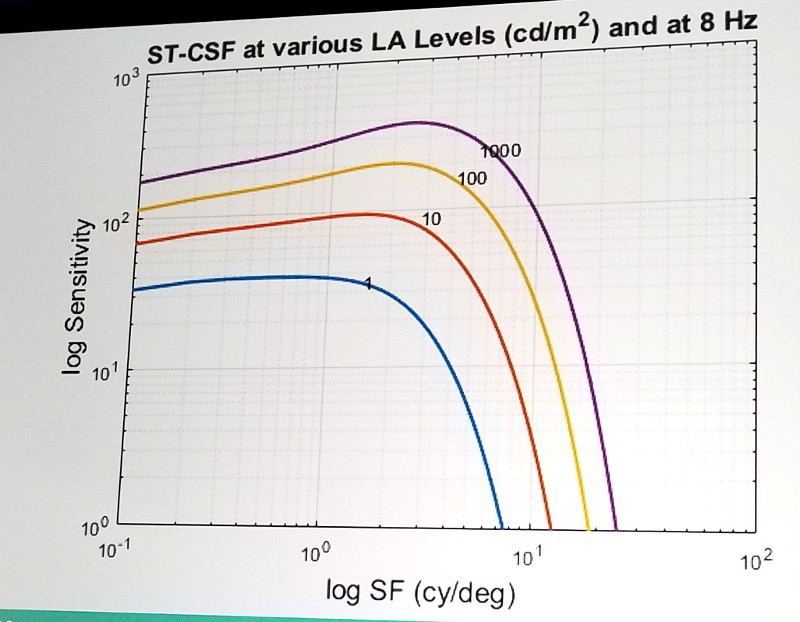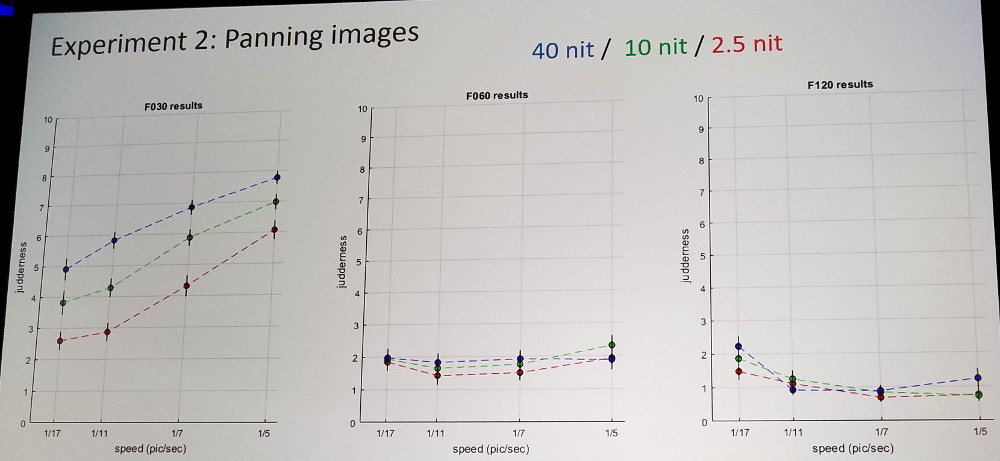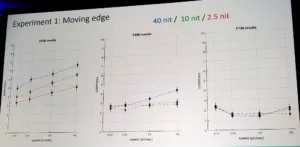Alex Chapiro from Dolby Laboratories presented some new data from a high frame rate (HFR) study they recently conducted. He said that the term “judder” is typically used to describe several artifacts that occur in 24 fps content in a cinema: non-smooth motion, false multiple edges, edge flickering and motion blur. Nevertheless, these characteristics are part of the “film” or “cinematic” look, which can turn into the “soap opera” look when simply jumping to 48 fps (i.e. the second Hobbit movie).
He said the film look has the right amount of “judderness”. The plot below shows visual sensitivity vs. cycles/second and cycles/degree, along with a slice through this surface at 8 Hz. This illustrates that with HDR movies with higher brightness, the moving objects are brighter and our eyes are more sensitive to judder in this case. What was acceptable judder in the SDR movie is now objectionable in the HDR movie.


To test this, Charpiro did an experiment with a 120 Hz. LG OLED TV, which was first carefully evaluated and calibrated. The stimulus was a moving edge pattern with participants asked to rate judder on a scale from 0 to 9. The tested variables included:
- Frame rates: 30, 60, 120
- Speed across screen: 5, 7, 11, 17 seconds
- Mean luminance: 2.5, 10, 40 cd/m²
- Michelson contrast: 0.5, 0.75, 0.95
Dolby found that the first three variables were statistically significant but Michelson contrast was not. Results are shown below. The clear trend of increases in perceived judder with brightness and object movement is evident for the 30 fps case. Difference diminish significantly at 60 fps and are lower still for 120 fps.
In a second experiment, the stimulus was changed from the moving edge to three new image pans (bunny, thorny flower and gas station), using the same test conditions. All conditions yielded statistically meaningful results with a similar pattern.

The third experiment was to vary a simulated shutter angle from 0º, 180º and 360º. But, like contrast, it is not enough to compensate for increases in judder.
Chapiro was asked in multiple flashes of a sequence helped. He said yes for flicker reduction but not really for judder reduction. – CC

